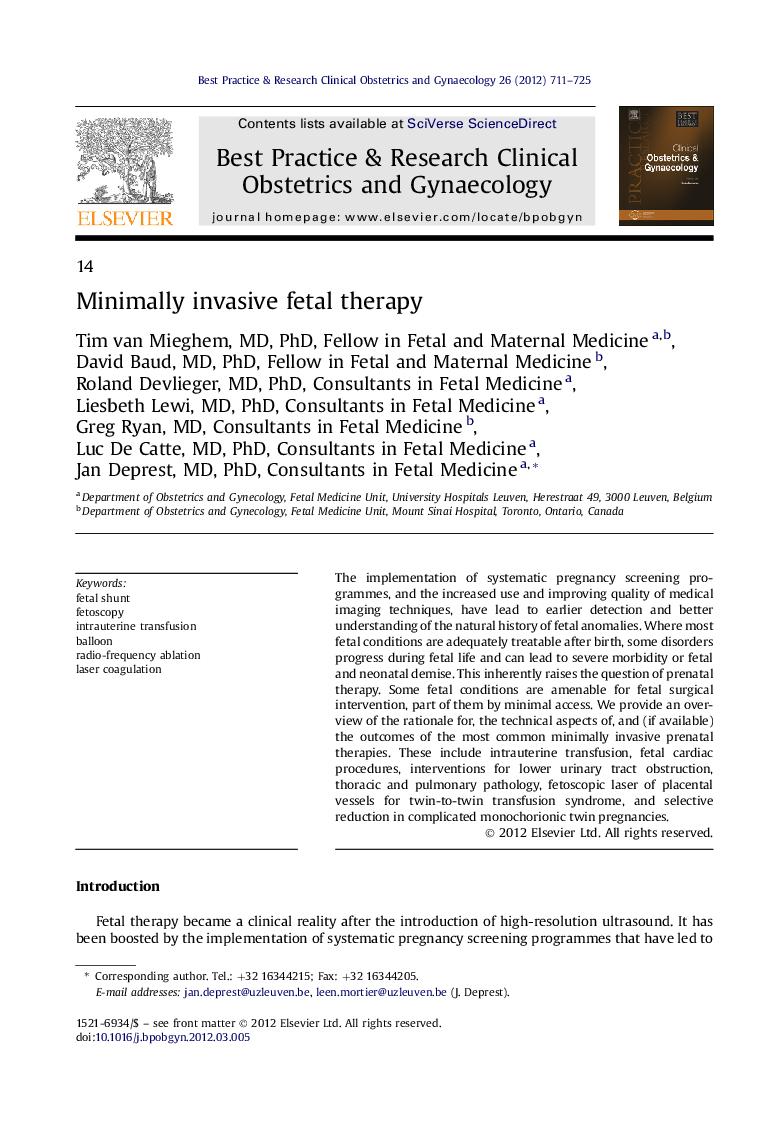| Article ID | Journal | Published Year | Pages | File Type |
|---|---|---|---|---|
| 3907269 | Best Practice & Research Clinical Obstetrics & Gynaecology | 2012 | 15 Pages |
The implementation of systematic pregnancy screening programmes, and the increased use and improving quality of medical imaging techniques, have lead to earlier detection and better understanding of the natural history of fetal anomalies. Where most fetal conditions are adequately treatable after birth, some disorders progress during fetal life and can lead to severe morbidity or fetal and neonatal demise. This inherently raises the question of prenatal therapy. Some fetal conditions are amenable for fetal surgical intervention, part of them by minimal access. We provide an overview of the rationale for, the technical aspects of, and (if available) the outcomes of the most common minimally invasive prenatal therapies. These include intrauterine transfusion, fetal cardiac procedures, interventions for lower urinary tract obstruction, thoracic and pulmonary pathology, fetoscopic laser of placental vessels for twin-to-twin transfusion syndrome, and selective reduction in complicated monochorionic twin pregnancies.
